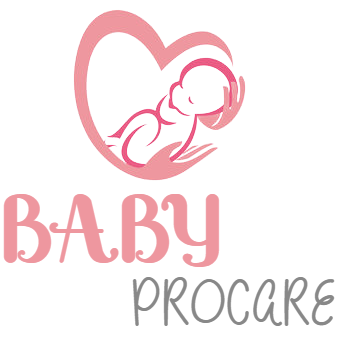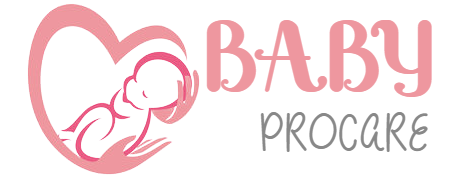As your pregnancy nears its final stages, the excitement and anticipation of meeting your baby become even more palpable. Weeks 36 and 37 mark an important milestone, as your baby continues to develop and your body undergoes several significant changes. During these weeks, your baby is almost ready for life outside the womb, and your body is preparing for the intense work of labor and delivery. Here’s a comprehensive guide to what you can expect during these two critical weeks.
Your Baby’s Development at 36-37 Weeks
At 36-37 weeks, your baby is moving closer to being fully developed and prepared for birth. Although full term is officially considered 37 weeks, many babies born at 36 weeks are healthy and do not need to spend time in the neonatal intensive care unit (NICU). Here’s a breakdown of what is happening inside the womb during these crucial weeks.
Growth and Size
- Week 36: By the 36th week of pregnancy, your baby is about the size of a papaya, weighing around 5.5 to 6 pounds and measuring about 18.5 to 19 inches in length. This marks a significant growth spurt as your baby continues to gain weight rapidly in preparation for life outside the womb.
- Week 37: At 37 weeks, your baby is considered “full term” and may weigh around 6 to 6.5 pounds. Their length might be between 19 and 20 inches, resembling the size of a head of romaine lettuce. The majority of your baby’s growth in these weeks is focused on putting on fat, which will help regulate body temperature once born.
Lung and Brain Development
- The baby’s lungs are rapidly maturing during these final weeks, and by week 37, they are fully functional. This means that the baby is now able to breathe independently once born. However, the lungs may still need some fine-tuning in some babies.
- The brain is also experiencing significant development. The baby’s brain is growing rapidly, aiding in motor skills, sensory abilities, and overall coordination. This development is vital for adjusting to the new environment after birth.
Fat Stores and Skin
- Throughout these final weeks, your baby is continuing to build fat stores, which help with warmth and energy once born. The skin, which was previously wrinkled, is becoming smoother as it fills out with fat. Most of the lanugo (the fine, soft hair covering the baby) has fallen off, and the vernix (the protective, waxy coating) is thickening, providing extra protection against infection.
Positioning
- Ideally, by week 36, your baby should be in a head-down position, ready for birth. However, in some cases, babies may still be in breech or transverse positions at this point. If this is the case, your doctor may attempt to manually turn the baby through a procedure known as an external cephalic version (ECV) or may recommend a cesarean delivery if the baby does not turn on their own.
Your Body at 36-37 Weeks
As you near the end of your pregnancy, your body is going through several changes to accommodate your growing baby and prepare for labor. These weeks can bring a mix of physical discomfort, excitement, and anticipation. Here’s what you can expect:
Lightening and Pelvic Pressure
- One of the most noticeable changes during these weeks is called “lightening.” Lightening occurs when the baby drops lower into the pelvis in preparation for birth. This can happen anywhere from a few days to a few weeks before labor begins. When this happens, you may feel more pressure on your pelvis and bladder, which can lead to frequent urination. On the other hand, lightening can relieve some of the pressure on your diaphragm, making it easier to breathe.
Braxton Hicks Contractions
- By week 36, you may experience more frequent and intense Braxton Hicks contractions. These are practice contractions that help your uterus prepare for labor. They are usually irregular and do not become progressively stronger or closer together. Some women find these contractions uncomfortable, but they are typically harmless and indicate that your body is getting ready for labor.
Changes in the Cervix
- Your cervix begins to soften, thin out (efface), and dilate in preparation for childbirth. While some women may experience these changes gradually, others may not notice any changes until active labor begins. Your doctor will check your cervix during prenatal visits to monitor its progress.
Increased Vaginal Discharge
- As you approach labor, you may notice an increase in vaginal discharge. This is often a sign that your body is preparing for birth. The discharge is usually clear, but it may become slightly tinged with blood. This is called the “bloody show” and is the mucus plug that has sealed your cervix during pregnancy. Its release is a sign that your body is gearing up for labor.
Fatigue and Discomfort
- As your pregnancy reaches its final weeks, you may feel more tired than usual. This can be due to the increased physical demands on your body, the pressure from your growing baby, and the emotional preparation for labor. Additionally, backaches, pelvic discomfort, and leg cramps are common as your body adjusts to its final stages of pregnancy.
Colostrum Production
- Some women begin to leak colostrum, the early form of breast milk, in the last few weeks of pregnancy. This thick, yellowish liquid is highly nutritious for your newborn and will serve as the baby’s first food after birth. If you’re experiencing leakage, it’s completely normal and indicates that your body is preparing for breastfeeding.
What to Expect in Week 36-37
Signs of Labor
As your body prepares for the big day, it’s essential to be aware of the signs of labor so you can act accordingly when the time comes. Here are the key signs that labor may be approaching:
- Regular Contractions:
- Contractions that are coming at regular intervals, increasing in frequency, intensity, and duration, are a clear sign that labor is starting. If contractions are consistently coming every 5 minutes and last for about 30 to 60 seconds, it’s time to go to the hospital or birthing center.
- Water Breaking:
- If your water breaks, it can be a dramatic or subtle experience. It may gush out, or you might notice a slow trickle of amniotic fluid. Either way, it’s an indication that labor is imminent, and you should contact your healthcare provider immediately.
- Pelvic Pressure and Lower Back Pain:
- Increased pelvic pressure, cramping, and lower back pain can signal that your baby is descending into the birth canal. You may also experience discomfort in your lower abdomen as your uterus contracts in preparation for delivery.
- Bloody Show:
- The bloody show is the discharge of the mucus plug that has been sealing your cervix. It may appear as pink or brown-tinged mucus, signaling that your cervix is beginning to dilate. While this is a sign of early labor, it can also happen days before the actual onset of labor.
When to Call Your Doctor
If you notice any of the following, it’s essential to contact your healthcare provider immediately:
- Severe abdominal pain or cramping
- Heavy bleeding (more than a small amount of spotting)
- Sudden decrease in your baby’s movements
- Severe headaches, blurred vision, or sudden swelling in your face or hands
- Symptoms of preterm labor (before 37 weeks)
Things to Do During Weeks 36-37
Prepare for Labor
As your due date approaches, now is the time to get everything in order for labor and delivery. Here are some key tasks to tackle in these final weeks:
- Pack Your Hospital Bag: Make sure you have everything you need for both you and the baby. Essentials include clothes, toiletries, and any personal items you may want during your stay.
- Finalizing Your Birth Plan: If you have a birth plan, review it with your doctor to ensure that your preferences are clearly communicated. It’s also essential to remain flexible in case circumstances change during labor.
- Install the Car Seat: Make sure the baby’s car seat is installed and ready to go. Many hospitals require you to bring the car seat in order to take your baby home.
Monitor Baby’s Movements
During these final weeks, it’s essential to keep track of your baby’s movements. If you notice a significant decrease in movement, it’s important to reach out to your healthcare provider for further evaluation.
Attend Prenatal Appointments
Your prenatal visits will be more frequent as you approach your due date, usually occurring once a week. During these appointments, your doctor will monitor your baby’s growth, check your cervix for dilation, and evaluate your overall health and well-being.
Stay Hydrated and Rested
Even though the final weeks of pregnancy can be exhausting, try to rest as much as possible. Stay hydrated, avoid overexertion, and prioritize relaxation.
Your Baby Is Almost Here!
Weeks 36 and 37 of pregnancy are a time of major changes for both you and your baby. As your due date draws closer, the anticipation can be overwhelming. By now, you may be feeling physically and emotionally exhausted, but rest assured, your body is doing exactly what it needs to do to bring your little one into the world. Remember to stay in touch with your healthcare provider, monitor your body for signs of labor, and enjoy these final weeks as you prepare for the arrival of your baby. Before you know it, your little one will be in your arms.


